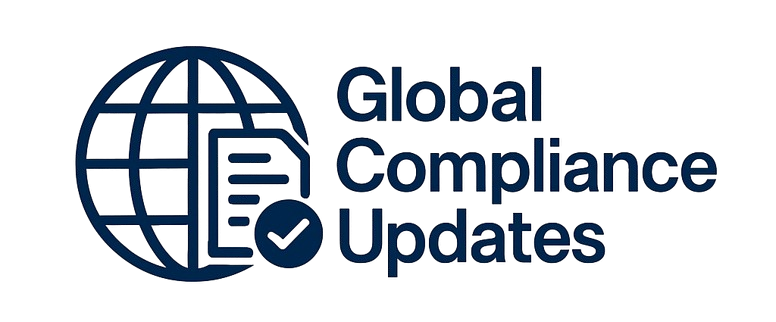Onboarding in a GMP environment leads to some questions and confusion. Are contractors treated the same as long-term employees? Where do GMP Training end and HR training begin? When can employees begin working? How differently should new and transferred employees be treated in the onboarding process?
Fortunately, there are measures you can take to increase the likelihood these employees will stay with your organization. A well-designed Onboarding Program is an integral part of your company’s culture. It not only promotes new hire retention but also can have new hires contributing independently to the business more quickly.
WHY SHOULD YOU ATTEND?
Compliance considerations, your quality culture, and work culture are all important points of focus. Additionally, where do employee “onboarding” end and real “job training” start? Your onboarding effort is critical in so many other ways too, as it represents your only opportunity at a first impression, and allows you to shape early motivation for your new employees. Although many hiring managers and other supervisory personnel struggles with onboarding, there are simple steps you can take to ensure a successful and compliant program. This course will address the issues that accompany onboarding new or transferred employees and enable you to navigate them successfully.
AREA COVERED
- FAQs for employee onboarding
- Management’s expectations for new employees
- HR onboarding
- Quality’s role in the onboarding process
- GMP training requirements
- Handling full-time employees vs. contractors and other temporary personnel
- Benchmarks for training and competency
LEARNING OBJECTIVES
- Define the onboarding process in the context of compliance
- Interact with Human Resources to create a coordinated onboarding strategy
- Differentiate the training requirements for full-time employees and contractors
- Distinguish training requirements for new employees vs. employees transferring internally
- Prioritize training items to ensure compliance
- Reduce the learning curve for new or transferred employees
WHO WILL BENEFIT?
This course will be of benefit to anyone responsible for managing or delivering training in a GMP environment, and HR employees who interact frequently with the GMP training organization to coordinate onboarding.
- Training department management
- Human Resource personnel
- Training professionals
- Instructional designers
- Supervisory management of operational departments
- QA/QC personnel
- Manufacturing managers/supervisors
- Pharmaceutical and cGMP auditors
- Compliance officers
- Validation specialists, scientists, engineers
- Medical/technical writers
- Consultants/service providers
- Engineering and design controls teams
- General/corporate counsel
Compliance considerations, your quality culture, and work culture are all important points of focus. Additionally, where do employee “onboarding” end and real “job training” start? Your onboarding effort is critical in so many other ways too, as it represents your only opportunity at a first impression, and allows you to shape early motivation for your new employees. Although many hiring managers and other supervisory personnel struggles with onboarding, there are simple steps you can take to ensure a successful and compliant program. This course will address the issues that accompany onboarding new or transferred employees and enable you to navigate them successfully.
- FAQs for employee onboarding
- Management’s expectations for new employees
- HR onboarding
- Quality’s role in the onboarding process
- GMP training requirements
- Handling full-time employees vs. contractors and other temporary personnel
- Benchmarks for training and competency
- Define the onboarding process in the context of compliance
- Interact with Human Resources to create a coordinated onboarding strategy
- Differentiate the training requirements for full-time employees and contractors
- Distinguish training requirements for new employees vs. employees transferring internally
- Prioritize training items to ensure compliance
- Reduce the learning curve for new or transferred employees
This course will be of benefit to anyone responsible for managing or delivering training in a GMP environment, and HR employees who interact frequently with the GMP training organization to coordinate onboarding.
- Training department management
- Human Resource personnel
- Training professionals
- Instructional designers
- Supervisory management of operational departments
- QA/QC personnel
- Manufacturing managers/supervisors
- Pharmaceutical and cGMP auditors
- Compliance officers
- Validation specialists, scientists, engineers
- Medical/technical writers
- Consultants/service providers
- Engineering and design controls teams
- General/corporate counsel
Speaker Profile
 Michael Esposito
Michael Esposito
Michael Esposito has over 30 years’ experience in the pharmaceutical industry and 17 years’ experience in GMP training and document management. He has worked for Wyeth Pharmaceuticals, Pfizer, and Johnson & Johnson's Consumer Healthcare Division in a variety of areas including Packaging, project administration, Quality Assurance, Government Contracts, translations, systems training, and international operations. He collaborated in the development and implementation of the training portion of the Consent Decree workplan for Johnson & Johnson Consumer Healthcare and revised their introductory GMP course. He is a member of the training organizations GMP Training Educators Association and Association for GXP Excellence and …
Upcoming Webinars

ChatGPT and Project Management: Leveraging AI for Project M…

Workplace Investigations 101: How to Conduct your Investiga…

Project Management for administrative professionals

The Monte Carlo Simulations in Excel for Risky Investments

Onboarding is NOT Orientation - How to Improve the New Empl…

Dealing With Difficult People: At Work & In Life

Transform Data into Insights: A Beginners Guide to Excel Pi…

Construction Lending And Real Credit Administration: Evalua…

Understanding Accounting for non - Accounting professionals

Harassment, Bullying, Gossip, Confrontational and Disruptiv…

New Form 1099 Reporting Requirements: 2025 Compliance Update

Human Error Reduction Techniques for Floor Supervisors

HR Metrics and Analytics 2025 - Update on Strategic Plannin…

Treating Employees Like Adults: Discipline versus Empowerme…

7 Ways To Beat Burnout: Without Quitting Your Job


How to Write Procedures to Avoid Human Errors

Handbook Overhaul 2026: Compliance, OBBB Act & Beyond

FDA Proposes Framework to Advance Credibility of AI Models

Ethical Terminations: Navigating Employee Exits with Legal …

Understanding EBITDA – Definition, Formula & Calculation

Project Management for Non-Project Managers - Scheduling yo…

4-Hour Virtual Seminar on Hidden Secrets of Selling & Marke…

Validation Statistics for Non-Statisticians

Data Integrity and Privacy: Compliance with 21 CFR Part 11,…


The Alphabet Soup: When the FMLA, ADA, COBRA, and Workers' …

Talent Management: How to Leverage AI and ChatGPT Tools for…


Offboarding with Care: Conducting Legal & Ethical Employee …

2-Hour Virtual Seminar on How to Conduct an Internal Harass…

Payments Fraud Detect & Prevent Check, ACH and P-Card Schem…

Managing Toxic & Other Employees Who have Attitude Issues



Reduce Stress in the Workplace: Effective Ways to Handle Co…





Excel - Pivot Tables - The Key To Modern Data Analysis and …
